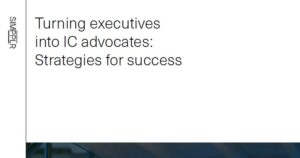What General Mills’ restructuring means for the future of corporate comms
Gain prescient, timely takeaways for your department from Ogilvy’s employee experience experts.

Last week, General Mills announced a restructure to their corporate communications team.
What was once a single, traditional corporate communications team will now become three teams overseen by one leader:
- Internal and employee experience team
- The corporate and brand storytelling team
- An operations team
This shift is more than just a reorg. It’s more than a shuffling of the teams, people and leaders. It’s a rethinking of how corporate communications must operate in order to best move the business forward. It’s a reflection that the experience built for employees should be a priority—not an afterthought.
This move is signaling an understanding of the value and imperative in engaging their employee audience—and that this is no simple task. To do so effectively requires trained, specialized professionals in the same way engaging a consumer audience does.
As employee experience practitioners, we believe that who your brand is on the inside shapes how customers see your brand on the outside. By making employee experience and internal comms central to their communications operations, General Mills is demonstrating that they “get it,” and they believe the employee audience is essential to the brand’s success.
There can be an implicit expectation of employees that part of their job is to love the brand and want to contribute to its purpose and reputation—but building that kind of personal investment with employees takes intentional effort. Just like there’s a difference between a person who buys a product and someone who buys a brand, there’s also a difference between someone who has a job and someone who’s showing up for the employer’s purpose.
Catering to colleagues, and walking the talk
In addition to teams being focused on corporate communications, General Mills also announced they’d have a team dedicated to operations. In the announcement, General Mills’ CCO described this group as being tasked with “making sure the trains are running on time” and operating as “tower control.”
Unfortunately, old habits die hard. Too often we see a new “best practices” label placed over the same behaviors. Rethinking the approach to internal communications and prioritizing employee experience as part of corporate comms must be more than renaming or repackaging old tactics.
To really make the kind of leap General Mills is going for, organizations need a fundamentally evolved way of thinking about the employee base as an audience, as influencers and as individuals. Brands may know their customers’ personas and journeys—but do they have the same understanding of their employees?
Employees are a complex audience. Their expectations and needs differ from one another just like any other audience. Understanding their segmentation is crucial. What are the metrics that matter to the relevance of your initiatives? Age? Tenure? Role? Region? Division? Interest areas? Time of last raise? What specific influences or impacts can they each have on other parts of your audience?
Finally, communications alone will not build the lasting, fruitful connections and exchanges of value on which great brands thrive. Interactions with leaders, managers, HR and IT are brand experiences, too—for internal audiences. Also, when it’s time for a multi-channel, internal campaign, employees deserve on-brand, high-quality, delightful execution, just like customers do.
What can you learn from General Mills?
Restructuring the corporate communications function might be feasible for some, but if it’s not in the cards for your company, here are some actions to consider to prioritize employees’ experience.
- Map your employee segments. Understand how they engage—or don’t engage—in current internal communications efforts.
- In planning a new initiative, consider internal employees as a key target audience.
- Take a moment to outline the current messages being communicated to employees. Determine priority order and cadence for cascading or repeating that information.
We know that a majority of companies—some 60%—don’t really have a long-term strategy for their internal communications. However, organizations with effective change and communication programs are 3.5 times more likely to outperform their peers. Companies like General Mills are making moves that show employee experience is moving to center stage. To realize the investment in the brand, it’s essential to invest in the employee as well.
Mariah Young, marketing strategist, and GerRee Anderson, creative director, are part of Ogilvy’s Employee Experience practice in Denver.






